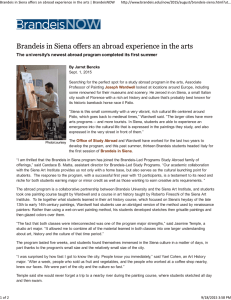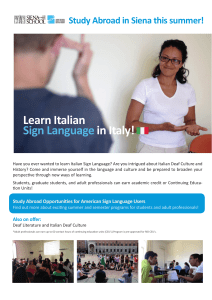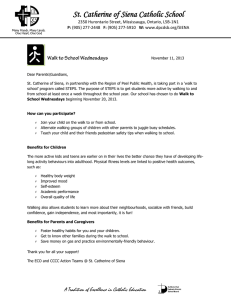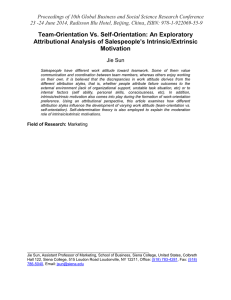A return to the Renaissance Tweet Share
advertisement
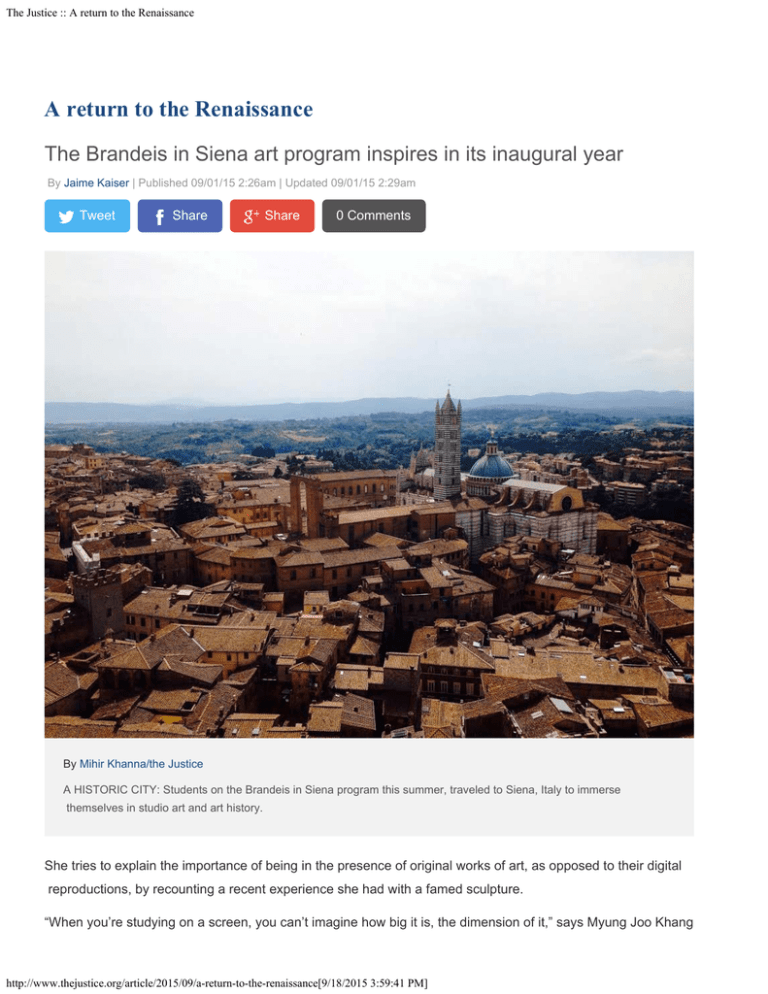
The Justice :: A return to the Renaissance A return to the Renaissance The Brandeis in Siena art program inspires in its inaugural year By Jaime Kaiser | Published 09/01/15 2:26am | Updated 09/01/15 2:29am Tweet Share Share 0 Comments By Mihir Khanna/the Justice A HISTORIC CITY: Students on the Brandeis in Siena program this summer, traveled to Siena, Italy to immerse themselves in studio art and art history. She tries to explain the importance of being in the presence of original works of art, as opposed to their digital reproductions, by recounting a recent experience she had with a famed sculpture. “When you’re studying on a screen, you can’t imagine how big it is, the dimension of it,” says Myung Joo Khang http://www.thejustice.org/article/2015/09/a-return-to-the-renaissance[9/18/2015 3:59:41 PM] The Justice :: A return to the Renaissance ’16, an Art History major. “But when I was there, I was overwhelmed. Not only the size. I mean it’s tall, it’s very tall, but you know just looking at it ... it was the surface Michelangelo actually touched.” The piece of art Khang describes is none other than Renaissance sculptor Michelangelo di Lovovico Buonarroti Simoni’s “David,” located at the Galleria dell Accademia Museum in Florence, Italy. Khang visited the museum on a field trip along with 12 classmates just a couple of months ago. It was one of many cultural sites the group visited during the five weeks they participated in the inaugural year of the Brandeis in Siena program. Brandeis in Siena is a five-week intensive abroad opportunity for Art History and Studio Art students based in the medieval Italian city of Siena, organized in cooperation with the Siena Art Institute (SART). Every day, students in the program took three hours of art history courses in the morning and three hours of studio art in the afternoon at SART, but through the program got to experience plenty of other experiential and cultural gems. Prof. Joseph Wardwell (FA) taught the “Painting in Siena” studio class, while an art history professor and coordinator from the art institute, Roberto Fineschi, taught “Early Renaissance Art in Tuscany from the Age of Dante to the Medici.” Both classes were taught in English. The program is especially unique in one significant way—its location. It bucks the trend of the 67-plus American study abroad programs that exist in the larger and more well-known Italian art mecca of Florence, though the group did go on excursions there and elsewhere around the country. “I’d say that there is no better place to study this period of Art History,” Fineschi explained in an email to the Justice. “The incredible advantage for those students that can have this experience is to see on-site the pieces we usually look at in PowerPoints. If you ask students, I am sure that they will confirm what a ‘shock’ it is to admire F.I. Duccio’s Maestà or Ambrogio Lorenzetti’s Good Government having those pieces in front of you: color, size, material; the location itself that most of times is the original one.” By Photo Courtesy of J. Scott Van Der Meid LEARNING BY EXAMPLE: Professor Wardwell talks to a student about technique while painting in the studio. Siena was chosen in part because of an already-established relationship between the Brandeis Office of Study Abroad and the Siena Liberal Arts College. Wardwell also has a personal connection to the city, having studied there as a student himself in the 1990’s. Commenting on his role in teaching and developing the program, Wardwell says that he wouldn’t want to do just another study abroad program. “I wanted to do something very specific, it was a place I knew well, I knew the http://www.thejustice.org/article/2015/09/a-return-to-the-renaissance[9/18/2015 3:59:41 PM] The Justice :: A return to the Renaissance language,” he says. The first inklings of the Siena program began 10 years ago when study abroad office staff approached him. “In about 2004, 2005 — because studio art students were a historically low cohort of study By Photo Courtesy of J. Scott Van Der Meid CULTURAL OUTING: Students and professors pose for a group picture while on a field trip in Florence to study and explore medieval art. abroad students,” says Wardwell. There aren’t many programs that combine Studio Art and Art History, but when Wardwell was devising the curriculum he felt it was crucial to build a fluid boundary between the two. “I wanted there to be a continuity to the program where it wasn’t that you were studying abroad and studying these two subjects, but it was that these subjects were connected to the place while you were located there.” The techniques they used for their compositions were far outside of a traditional painting class that would be taught at Brandeis. Commenting on the process, Khang said, “You actually see the process of artwork being made. You get to appreciate art not only as something to analyze but actually as something that was made by the artist.” One of the cultural highlights of the trip was the 2015 Palio di Siena, a horse race held twice each year, first in July and again in August. A horse from each of the 17 “contrade” or neighborhoods in Siena is represented. The tradition dates back to medieval times, and the deeply traditional nature of the ceremony is felt in the customs and celebrations associated with the Palio. Allison Simon ’17, a student on the trip, describes one of these traditions. “For example, I woke up at like eight o’clock in the morning, and then, suddenly, we hear really loud snare drums outside.And it’s weirdly loud this morning, so I look outside and a whole ’nother neighborhood comes into the neighborhood that I was living in and has a flag and snare drums out with the neighborhood I’m living in and it went on the entire day. This one contrada battled everyone that they walked by.” Yet it would be only half the story to say that the program immersed them in Italian culture. Ironically, it took an eight-hour flight to a different continent to experience a new aspect of Brandeis culture. For Khang, the trip immersed her in a community which appreciated art in the same way she did. “It could happen anywhere, you know?” Khang muses—“it” being the great conversations and relationships she formed with her new circle of art-minded friends. “Maybe it could happen here, but that environment, that cozy and welcoming environment, made us all open up and care about each other.” http://www.thejustice.org/article/2015/09/a-return-to-the-renaissance[9/18/2015 3:59:41 PM] The Justice :: A return to the Renaissance Wardwell expressed enthusiasm about the program’s success and hope for its longevity. Next year, a Studio Art professor will be provided by the Siena Institute, and Prof. Jonathan Unglaub (FA) will teach the art history component of the program. Khang remembers liking every single day of the trip. One of the only things Wardwell would have changed was Siena’s summer heat. When Simon was asked if she would recommend the trip, she didn’t hesitate: “I would; I definitely would.” -Briannna Majsiak contributed reporting. http://www.thejustice.org/article/2015/09/a-return-to-the-renaissance[9/18/2015 3:59:41 PM]
